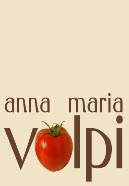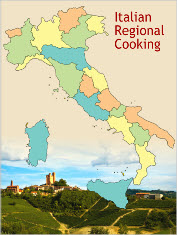



JOIN NOW
our Italian Cooking
Newsletter
our Italian Cooking
Newsletter





Publication or use of pictures, recipes, articles, or any other material form my Web site, on or off-line without written permission from the author is prohibited. If you would like to use my articles on your Web site or in your publication, contact me for details. Avoid infringing copyright law and its consequences: read the article 7 Online Copyright Myths by Judith Kallos
Read our
DISCLAIMER and
PRIVACY POLICY
before using
our site
-------------------
Linking Policy
Advertise with us
DISCLAIMER and
PRIVACY POLICY
before using
our site
-
Advertise with us
Copyright © 2003 - 2011 Anna Maria Volpi - All Rights reserved.
Anna Maria's Open Kitchen Site Map
site map
recipes
policies
about us
Some More Hot Topics You'd Like to See adv.
Intriguing Roman Cooking (2)

Bartolomeo Pinelli, Il ritorno delle mozzatore di notte, 1818.
For centuries Rome remained a city of a few thousand people. The population was 90,000 at the end of the sixteenth century, and 200,000 when the city became the capital of Italy. The Romans, detached from the political events of the papacy and the nobles, kept on living and cooking in a simple way, utilizing the products of the nearby countryside. The cooking style of Rome and the surrounding country became virtually identical. On the other hand, the cooking style of the Pope’s court and that of the nobles was very similar to that of other courts around Europe — rich and sumptuous.
Jewish cooking represents another chapter in Roman history. A city within the city, the Jewish quarter is the oldest community in Rome. Mandated to live in a small suburb, the Jews of Rome developed a kosher cooking that would remain authentic. The small trattorie kept the traditions of ancestors alive and became prestigious restaurants where you can taste some of the most celebrated Roman dishes today, including the renowned Carciofi alla Giudia (artichokes Jewish style). These are large, tender Roman artichokes deep-fried in olive oil until the outside leaves become brown and crispy.
The historic influence of Papal rule in Rome ended on the 20th of September in 1870, when troops of the Kingdom of Italy entered the city. Rome was annexed and, shortly after, became the capital of Italy. The Pope withdrew into Vatican City, which is still ruled today as an independent state.
Jewish cooking represents another chapter in Roman history. A city within the city, the Jewish quarter is the oldest community in Rome. Mandated to live in a small suburb, the Jews of Rome developed a kosher cooking that would remain authentic. The small trattorie kept the traditions of ancestors alive and became prestigious restaurants where you can taste some of the most celebrated Roman dishes today, including the renowned Carciofi alla Giudia (artichokes Jewish style). These are large, tender Roman artichokes deep-
The historic influence of Papal rule in Rome ended on the 20th of September in 1870, when troops of the Kingdom of Italy entered the city. Rome was annexed and, shortly after, became the capital of Italy. The Pope withdrew into Vatican City, which is still ruled today as an independent state.

In the late 1800s, after becoming the capital city of Italy, and with the massive immigration from the south after World War II, Rome became a true melting pot of different cooking habits.
The first turn in Roman life and cooking came after the royal court and the government moved to Rome in 1871. The military servicemen and bureaucrats mostly came from Piemonte, the businessmen from Lombardia. This was an enormous change for a city that had lived virtually isolated for centuries.
The immigrants brought with them new dishes that eventually entered the Roman culinary tradition: polenta (cornmeal), rice and peas, gnocchi (potato dumplings), and many others.
The population grew steadily, until it reached three million citizens. How did Rome receive the new wave of “invaders”? The tolerant character of the Romans and the charisma of the city made possible everyone’s assimilation. Rome became a city full of contrasts, a city chaotic at times, but with a friendly and conciliatory spirit. New generations of inspired cooks would soon create new exciting dishes, high gourmet cooking, but always in the Roman tradition of simplicity.
In the fifties and sixties, Hollywood discovered Rome, and Paparazzi photographers took photos of actors such as Tyrone Power, Ava Gardner, Richard Burton, Liz Taylor, or Sophia Loren in front of a plate of Fettuccine all’ Alfredo. Alfredo was an extravagant cook who used to personally serve his paper-thin fettuccine with golden forks. He invented “triple butter” fettuccine: nothing goes on it other than good parmigiano and a lot of butter.
There are so many Roman dishes that deserve to be mentioned here: from the Gnocchi alla Romana (dumplings made of semolina flour boiled in milk), to Puntarelle (curly tips of Catalogna chicory dressed with garlic, vinegar, and anchovy sauce); from Filetti di Baccala’ (salt cod fillet dip in batter and fried) to Suppli’ al Telefono (rice balls filled with mozzarella cheese, breaded, and fried); from Pomodori Ripieni, (large tomatoes stuffed with rice) to Abbacchio alla Cacciatora (suckling lamb in the hunter’s style, pan-roasted with garlic, rosemary, and vinegar). And the Fettuccine alla Papalina (in the Pope’s style), a tasty variation of the simple Carbonara, was originally a dish served to an unknown cardinal in a restaurant in Rome. The cardinal later became Pope Pius XII, and the fettuccine dish was renamed to commemorate the event. But the list is endless.
The first turn in Roman life and cooking came after the royal court and the government moved to Rome in 1871. The military servicemen and bureaucrats mostly came from Piemonte, the businessmen from Lombardia. This was an enormous change for a city that had lived virtually isolated for centuries.
The immigrants brought with them new dishes that eventually entered the Roman culinary tradition: polenta (cornmeal), rice and peas, gnocchi (potato dumplings), and many others.
The population grew steadily, until it reached three million citizens. How did Rome receive the new wave of “invaders”? The tolerant character of the Romans and the charisma of the city made possible everyone’s assimilation. Rome became a city full of contrasts, a city chaotic at times, but with a friendly and conciliatory spirit. New generations of inspired cooks would soon create new exciting dishes, high gourmet cooking, but always in the Roman tradition of simplicity.
In the fifties and sixties, Hollywood discovered Rome, and Paparazzi photographers took photos of actors such as Tyrone Power, Ava Gardner, Richard Burton, Liz Taylor, or Sophia Loren in front of a plate of Fettuccine all’ Alfredo. Alfredo was an extravagant cook who used to personally serve his paper-
There are so many Roman dishes that deserve to be mentioned here: from the Gnocchi alla Romana (dumplings made of semolina flour boiled in milk), to Puntarelle (curly tips of Catalogna chicory dressed with garlic, vinegar, and anchovy sauce); from Filetti di Baccala’ (salt cod fillet dip in batter and fried) to Suppli’ al Telefono (rice balls filled with mozzarella cheese, breaded, and fried); from Pomodori Ripieni, (large tomatoes stuffed with rice) to Abbacchio alla Cacciatora (suckling lamb in the hunter’s style, pan-
Cont’d

All the Roman Dishes Featured in Anna Maria’s Open Kitchen

Pasta Roman Style

Alfredo, and who on earth was he?

The Cuisine of Rome





